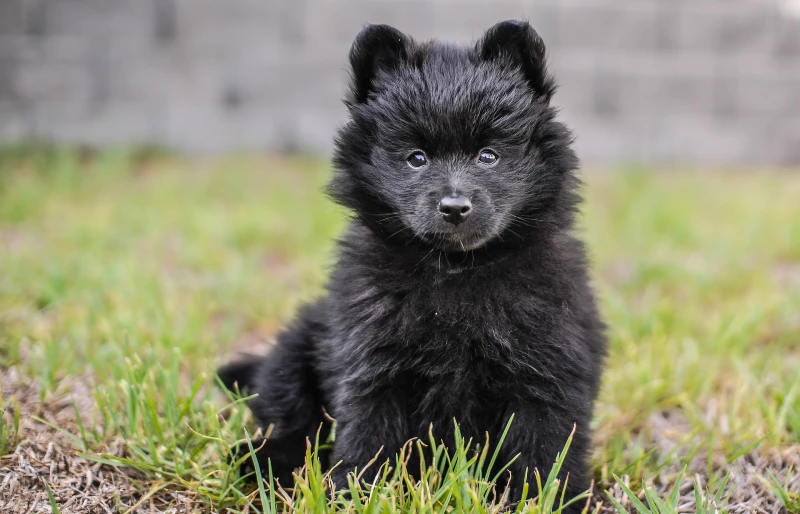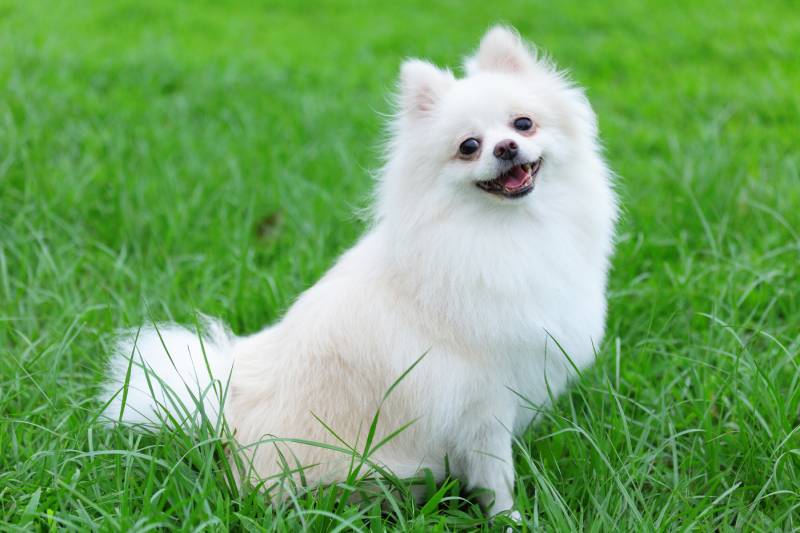Click to Skip Ahead
Pomeranians are one of the most popular breeds in the world, and for good reason. They are highly intelligent, loyal companions that make wonderful family pets. But they are also a big commitment, and if you’re considering getting one, or have had one for several years and it is showing signs of aging, you may be wondering how long do Pomeranians live? Generally, Pomeranians live between 10 and 12 years. Keep reading to learn what affects their lifespan and what you can do to keep your Pomeranian healthy and happy!
What’s the Average Lifespan of a Pomeranian?
Generally speaking, a healthy Pomeranian can live anywhere from 12 to 16 years. This is in line with the average lifespan of other small dog breeds, such as Chihuahuas and Yorkshire Terriers, and is a fairly long time compared to the average lifespan of most dog breeds, which is generally between 10 and 12 years.

Why Do Some Pomeranians Live Longer Than Others?
There are a few factors that can impact a Pomeranian’s lifespan. These include nutrition, environment and conditions, size, sex, genes, and breeding history. Let’s take a look at each of these in more detail.
1. Nutrition
Making sure your Pomeranian is fed the best quality food possible is essential for their overall health and longevity. A diet rich in protein, carbohydrates, vitamins, and minerals will help keep them strong and healthy throughout their lifespan. It’s also important to feed the proper amount of food and not overfeed. Overfeeding your Pomeranian, especially when they don’t get enough exercise, can lead to obesity. Obesity can then lead to other health conditions which can shorten a dog’s lifespan.
2. Environment and Conditions
It’s important to provide your Pomeranian with a safe environment that supports their needs. This includes providing plenty of space for exercise and play as well as making sure they have access to shade during hot summer months. It also means avoiding extreme temperatures (too hot or too cold) and providing a clean, dry place to sleep. Dogs that live outdoors or in bad conditions tend to have shorter lifespans than those that live inside. This is because the outdoors poses a greater risk of danger.

3. Living Quarters/Housing
The size of the enclosure that you provide for your Pomeranian should be large enough for them to move around comfortably and explore. It’s important to make sure that the area is free from any hazards or objects that could cause injury.
4. Size
Larger Pomeranians tend to live longer than smaller ones. This is because they have more muscle mass, which helps keep their heart rate low and prevent organ failure in old age.

5. Sex
Studies have found that female Pomeranians tend to live slightly longer than their male counterparts. This may be due to hormonal differences between the sexes or the fact that female dogs tend to receive more medical attention.
6. Genes
The genetics of your Pomeranian play a large role in their lifespan as well. If you purchase or adopt a puppy from a reputable breeder, they should be able to provide information on their parents’ and grandparents’ lifespans so that you can get an idea of what to expect with your pup. Many breeders breed their dogs to be free from most major inherited health conditions that can shorten a dog’s lifespan.

7. Breeding History
It’s important to know the breeding history of your Pomeranian if you are considering buying one from a breeder. Knowing the health history of both parents and any siblings can give you insight into potential genetic problems that could arise in the future, which will help determine how long your pet may live.
8. Healthcare
Making sure your Pomeranian receives regular vet checkups and preventive care is essential for their long-term health and well-being. This includes vaccinations, parasite control, dental care, and grooming. Proper healthcare can help keep your pet healthy and happy for years to come. You should take your Pomeranian for an annual vet visit even if they appear to be in good health.

The 4 Life Stages of a Pomeranian
1. Puppy

Pomeranians are considered puppies from birth until 12 months of age. A puppy Pomeranian should receive all the necessary vaccinations and deworming treatments as recommended by their veterinarian. They should also start on a high-quality diet formulated for puppies from day one so that they get all the nutrition they need to stay healthy and reach their full potential.
2. Young Adult

A young adult Pomeranian is between 1 and 2 years old. As your Pomeranian transitions into adulthood, they will need more exercise and playtime to keep them physically fit. Mental stimulation is also important for keeping them mentally sharp. They can transition from puppy food to an adult diet at this stage.
3. Mature Adult

At this stage of life, between ages 2 and 8, your Pomeranian should receive regular checkups and preventive care as recommended by their veterinarian. It’s also important to keep up with any necessary vaccinations, parasite control, dental care and grooming that they need.
4. Senior

As your Pomeranian enters their senior years, ages 8–9+, they may need a bit more TLC than before. This includes things like more frequent vet checkups, extra care and attention, and a diet that is appropriate for their age as their metabolism starts to slow down. Consider food formulated for senior dogs. Regular exercise can also help keep them healthy and happy but be aware that your Pomeranian won’t be as active as they once were and don’t need as much strenuous exercise as they did in their younger years.
How to Tell Your Pomeranian’s Age
To determine the age of your Pomeranian, look at their teeth, fur color, and size. Puppies usually have brighter eyes and soft downy fur. As they get older, their fur will become duller and less fluffy as it begins to gray from age. They may also begin to show signs of arthritis or other joint issues due to wear and tear on the body over time.
If you’re unsure how old your Pomeranian is and can’t tell their age, your vet can help you determine this by looking at their teeth. Younger dogs should have teeth that are relatively plaque free, but older dogs will have some plaque buildup and their teeth may be weaker than younger dogs.

Conclusion
With proper care and nutrition, a healthy Pomeranian can live anywhere from 12 to 16 years depending on factors such as genetics, diet, environment and conditions, size, sex, genes, and breeding history. Knowing the average lifespan of a Pomeranian and how to care for the breed at different life stages is important to ensure that you provide your pet with the best quality of life possible throughout their lifetime.
Featured Image Credit: KristinaSh, Shutterstock














